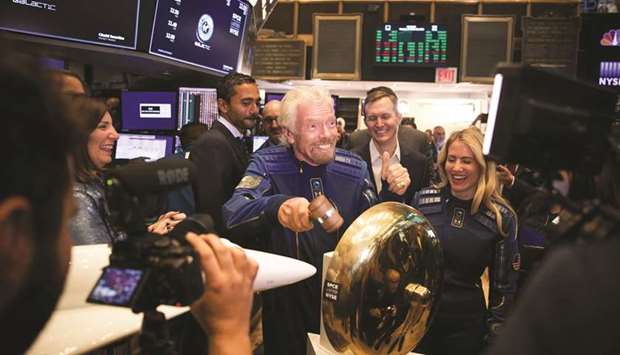Teeming enthusiasm for freshly minted tech stocks is one common theme of now and 20 years ago that equity enthusiasts have eyed warily.
While the market for initial public offerings is nowhere near as hot as it was at the top of the dot-com bubble, it’s hard to miss at least some of the commonalities. Sixty-six companies announced new plans for US IPOs in August after 72 did so in July, the most and second-most active months since 2014, according to data compiled by Bloomberg.
The data reflects the robustness of American equity markets this summer and could also point to potential risks, as new supply distracts investors and raises the stakes should the rally falter. Veterans of the dot-com era say it’s too early to stress over what is still mainly an indication of strength in capital markets, even as some of the parallels bear watching.
“It’s certainly a sign of confidence. Whether it’s exuberance is another matter,” said Nicholas Colas, co-founder of DataTrek Research. “Typically exuberance takes a little longer than three months to develop. I don’t think it’s misplaced – but it might be mispriced.”
There have been 17 IPOs this year worth more than $1bn, raising a total of $31.3bn. At this point in 2019, 7 IPOs of at least $1bn had raised $19.2bn total, according to data compiled by Bloomberg. Many of those companies are expected to complete their listings between Labor Day and Election Day, should market conditions co-operate.
With four months left in 2020, the pipeline is robust. There are still 156 companies that have filed prospectuses within the past year and have yet to price an IPO. That excludes companies that have confidentially filed, such as Airbnb .
This year’s debuts have done well so far, sparking interest among private firms to go public. New US listings jumped by an average of 45% from their IPO prices, excluding blank-check vehicles, outperforming the Nasdaq Composite Index’s 24% rise. Deals from the technology and communications space have jumped more than 80% from their offering prices, according to data compiled by Bloomberg.
It’s been the tech darlings that have shone brightest.
Through August, IPOs by that group has outperformed other debuts this year by a three-to-one margin. And that’s after more than one-third of them priced above their offering range.
Those returns and the surge in the Nasdaq 100 helped lure unicorns such as Palantir Technologies Inc and Airbnb Inc into the pipeline. Unity Software Inc, Sumo Logic Inc and Jfrog Inc have also filed to go public. The market’s run had become so torrid, it sparked a boom in so-called blank-check companies, where investors buy shares in an IPO of a shell company whose aim is to acquire a private firm, thus taking it public. Eighty-three of such firms have gone public this year, the most ever, according to data compiled by Bloomberg.
Virgin Galatic Holdings Inc promptly doubled in price after it went public when a SPAC bought it last fall. DraftKings Inc also jumped more than 100% in its debut, paving the way for lesser-known firms like Hall of Fame Resort & Entertainment Co, BurgerFi International, Tattooed Chef and UCommune.
“That is really appealing to investors that have been looking for big returns,” said Kim Forrest, chief investment officer of Bokeh Capital Partners. “The hyperbolic rise of the market has really driven people’s desire for new.”
This past week may give those new investors pause. The Nasdaq 100 dropped as much as 10% from its highs in an abrupt plunge, dragged down by high-flying stocks that propelled it 41% year-to-date through Tuesday. A tech wreck would slow momentum in the IPO market, but given how well recent debuts have performed, bearishness isn’t warranted, according to Marketfield Asset Management LLC.
“A tech selloff would be a risk for the IPO market, but really it is too early to jump to conclusions” said Michael Shaoul, Marketfield’s chief executive officer. “As always, you only know the choke point when you reach it.

Richard Branson, founder of Virgin Group, rings a ceremonial bell during Virgin Galactic Holdings’ initial public offering on the floor of the New York Stock Exchange (file).
